15.2 Classification of Mass Wasting
Joyce McBeth
There are three criteria used to classify slope failures:
- The type of material that failed (e.g., bedrock or unconsolidated sediment)
- The mechanism of the failure (how the material moved as it failed
- The rate of movement (how quickly the material moved)
The mechanism of the failure is the most important characteristic of a slope failure. The main mechanisms of are:
- In a fall, material drops through the air, either vertically or nearly vertically.
- In a slide, material moves as a coherent mass along a sloping surface, with little to no internal motion within the mass.
- In a flow, failing material has internal motion (like a fluid) as it moves.
While we don’t classify slope failures by the shape of the rupture surface (the rupture surface is the boundary between the slope and the sliding material), it’s still an important feature used to describe mass wasting processes. Slope failures with curved rupture surfaces are called rotational slope failures, and slope failures with planar rupture surfaces are called translational slope failures.
Unfortunately, classifying slope failure is not as simple as the classification scheme above suggests. Many slope failures involve more than one type of motion, and it may not be possible to know how the material moved. The types of slope failure that are covered in this chapter are summarized in Table 15.1.
| Failure Type | Type of Material | Type of Motion | Rate of Motion |
|---|---|---|---|
| Rock fall | Rock fragments | Vertical or near-vertical fall (plus bouncing in many cases) | Very fast (>10s m/s) |
| Rock slide | A large rock body | Motion as a unit along a planar surface (translational sliding) | Typically very slow (mm/y to cm/y), but some can be faster |
| Rock avalanche | A large rock body that slides and then breaks into small fragments | Flow (at high speeds, the mass of rock fragments is suspended on a cushion of air) | Very fast (>10s m/s) |
| Creep or solifluction | Soil or other overburden; in some cases, mixed with ice | Flow (although sliding motion may also occur) | Very slow (mm/y to cm/y) |
| Slump | Thick deposits (m to 10s of m) of unconsolidated sediment | Motion as a unit along a curved surface (rotational sliding) | Slow (cm/y to m/y) |
| Mudflow | Loose sediment with a significant component of silt and clay | Flow (a mixture of sediment and water moves down a channel) | Moderate to fast (cm/s to m/s) |
| Debris flow | Sand, gravel, and larger fragments | Flow (similar to a mudflow, but typically faster) | Fast (m/s) |
Rock Fall
Rock fragments can break off relatively easily from steep bedrock slopes, most commonly due to frost wedging. If you ever hike along a steep mountain trail on a cool morning, you’ll probably hear the occasional fall of rock fragments onto a talus slope. Water in the cracks in the rock freezes and expands overnight, and this can break the rock apart. When the ice thaws in the morning sun, some of these broken fragments will fall to the slope below (Figure 15.8).
![Figure 15.7 The contribution of freeze-thaw to rock fall [SE]](https://opentextbc.ca/kzlab/wp-content/uploads/sites/360/2017/11/contribution-of-freeze-thaw-to-rock-fall.png)
Talus slopes (also known as scree slopes) form from this fallen rock as it accumulates at the angle of repose below high rock walls. A typical talus slope near Keremeos in southern BC is shown in Figure 15.9 (left). In December 2014, a large block of rock split away from a cliff in this same area. It broke into smaller pieces that tumbled down the slope and crashed into the road, smashing the concrete barriers and gouging out large parts of the pavement (Figure 15.9, right). Luckily no one was hurt.

Rock Slide
A rock slide is a large body of rock that slips along a sloping surface. In most cases, the movement is parallel to a fracture, bedding plane, or metamorphic foliation plane; thus, most rock slides are translational slope failures.
The speed of the movement can range from very slow to moderately fast. The word sackung describes the very slow motion of a block of rock (mm/y to cm/y) on a slope. A good example is the Downie Slide, a translational slide north of Revelstoke, BC (Figure 15.10). Foliation is present in the rock, and approximately parallel to the slope. It’s acting as a plane of weakness, permitting a massive body of rock to inch its way down.
The Downie Slide was recognized prior to the construction of the Revelstoke Dam, and was moving very slowly (a few cm/year) at the time of dam construction. Geological engineers were concerned that the presence of water in the reservoir (visible in Figure 15.10) could further weaken the plane of failure and accelerate the slide. The result would have been a catastrophic failure into the reservoir that would have sent a wall of water over the dam and into the community of Revelstoke.
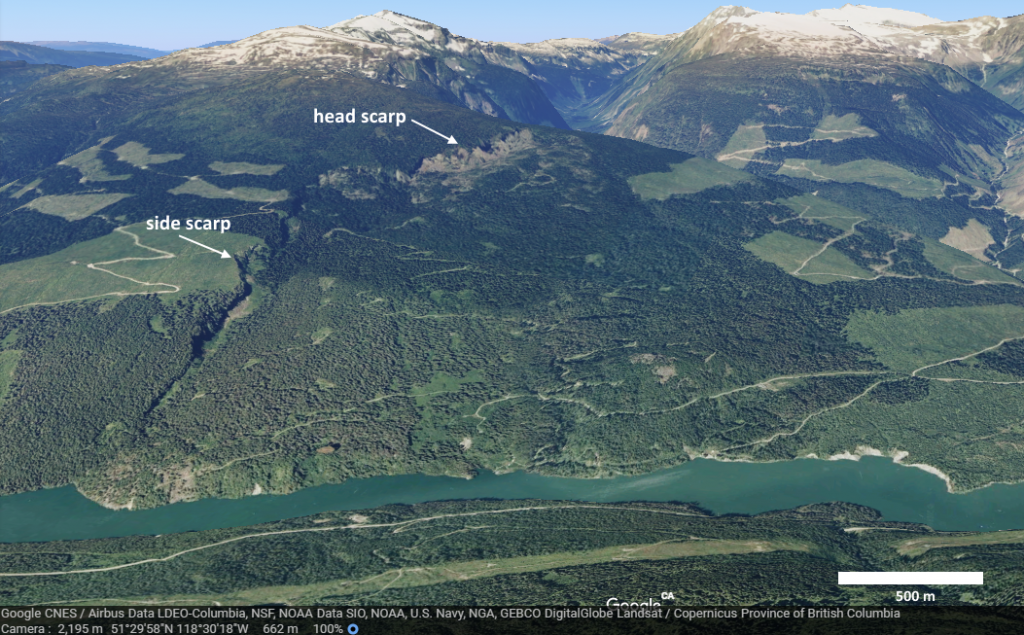
During the construction of the dam, the engineers tunneled into the rock at the base of the slide and drilled hundreds of drainage holes upward into the plane of failure. This allowed water to drain out more efficiently, reducing the hydrostatic pressure, and decreasing the rate of the slide. BC Hydro monitors this site continuously. The slide block is currently moving more slowly than it was prior to the construction of the dam.
In the summer of 2008, a large block of rock slid rapidly from a steep slope above Highway 99 near Porteau Cove, BC (between Horseshoe Bay and Squamish). The block crashed into the highway and adjacent railway and broke into many pieces, and the highway was closed for several days. Engineers and geoscientists took steps to stabilize the slope to decrease the risk of future rock falls. Rock bolts (long metal rods) were installed to anchor the blocks of rocks and prevent them falling Drainage holes were installed to drain water from the slope and decrease the water pressure. The rock along the slope is fractured parallel to the slope (Figure 15.11), and this almost certainly contributed to the failure, but it isn’t known what actually triggered the event. The weather was dry and warm during the preceding weeks, and there was no significant earthquake in the region.

Rock Avalanche
If a rock slides and then starts moving quickly (at a rate of m/s), the rock is likely to break into many pieces. It will become a rock avalanche, in which the fragments of rock travel like a fluid, and are supported by a cushion of air within and beneath the moving mass. The 1965 Hope Slide was a rock avalanche, as was the famous 1903 Frank Slide in southwestern Alberta. The 2010 slide at Mt. Meager (west of Lillooet) was also a rock avalanche and rivals the Hope Slide as the largest slope failure in Canada during historical times (Figure 15.12).
![Figure 15.11 The 2010 Mt. Meager rock avalanche, showing where the slide originated (arrow, 4 km upstream). It then raced down a steep narrow valley, and out into the wider valley in the foreground. [Mika McKinnon photo, http://www.geomika.com/blog/2011/01/05/the-trouble-with-landslides/ Used with permission.]](https://opentextbc.ca/kzlab/wp-content/uploads/sites/360/2021/08/2010-Mt.-Meager-rock-avalanche-.png)
Creep and Solifluction
The very slow—mm/y to cm/y—movement of soil or other unconsolidated material down slope is known as creep. Creep normally only affects the upper several centimetres of loose material, but in some cases sliding can also occur.
Creep can be facilitated by freezing and thawing because particles are lifted perpendicular to the surface by the growth of ice crystals within the soil, and then move downwards vertically due to gravity when the ice melts (Figure 15.13). The same effect can be produced by frequent wetting and drying of the soil. In cold environments, solifluction is a more intense form of freeze-thaw-triggered creep.
![Figure 15.12 A depiction of the contribution of freeze-thaw to creep. The blue arrows represent uplift caused by freezing in the wet soil underneath, while the red arrows represent depression by gravity during thawing. The uplift is perpendicular to the slope, while the drop is vertical. [SE]](https://opentextbc.ca/kzlab/wp-content/uploads/sites/360/2021/08/depiction-of-the-contribution-of-freeze-thaw.png)
Creep is most noticeable on moderate to steep slopes where trees or fence posts are consistently leaning in a downhill direction. Trees will try to correct their lean by growing upright, leading to a curved lower trunk known as a “pistol butt.” Creep can also generate terracettes, horizontal and repeating ridges on slopes (Figure 15.14). Historically, people thought terracettes formed where livestock or wild animals regularly travelled along slopes. While animals can accentuate terracettes, the primary reason terracettes form is creep.
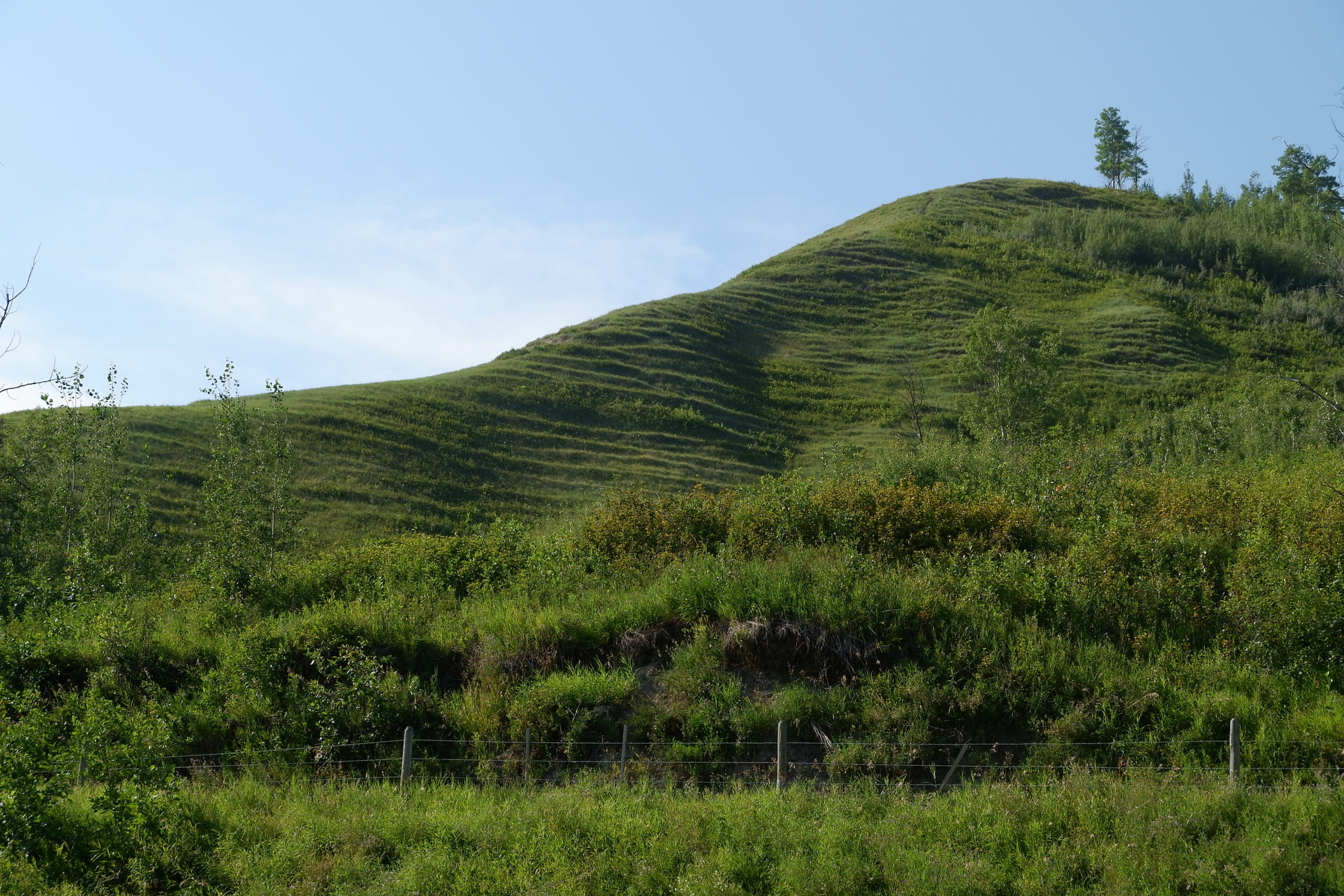
Slump
A slide is a mass movement where the material moves as a coherent mass. A slump is a type of slide that takes place within thick unconsolidated deposits. Slumps involve movement along one or more curved failure surfaces, and are thus rotational slope failures. Slumps have downward motion near the top and outward motion toward the bottom (Figure 15.15). They are typically caused by high water pressure within these materials on a steep slope.
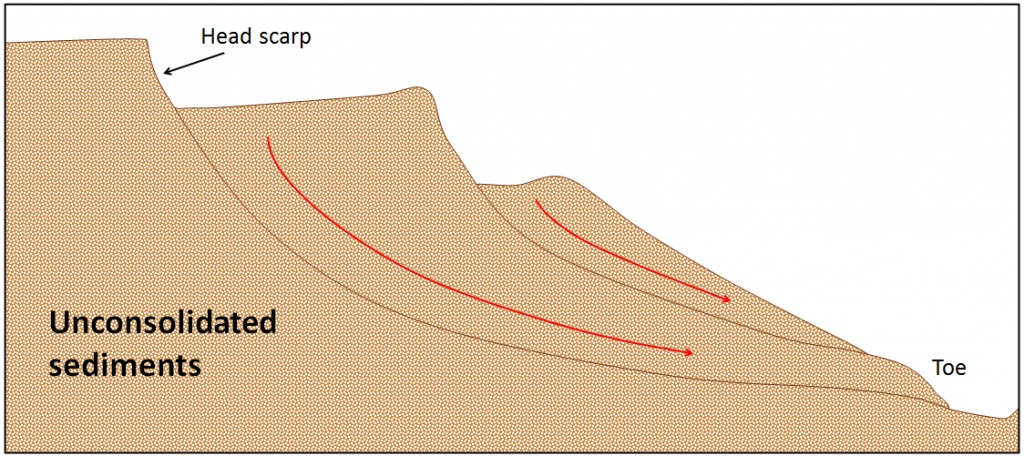
This slump in the Lethbridge area of Alberta (Figure 15.16) has likely been active for many decades, and moves a little more whenever there are heavy spring rains and snowmelt runoff. The toe of the slump is being eroded by the small stream at the bottom. The basal material (material at the toe of the slope) forms the support for the overlying mass of material in the slope, so erosion of that material contributes to slumping. This means the slumping will likely continue.
![Figure 15.15 A slump along the banks of a small coulee near Lethbridge, Alberta. The main head-scarp is clearly visible at the top, and a second smaller one is visible about one-quarter of the way down. The toe of the slump is being eroded by the seasonal stream that created the coulee. [SE 2005]](https://opentextbc.ca/kzlab/wp-content/uploads/sites/360/2021/08/slump-along-the-banks-of-a-small-coulee-near-Lethbridge.jpg)
Mudflows and Debris Flows
![Figure 15.16 A slump (left) and an associated mudflow (centre) at the same location as Figure 15.15, near Lethbridge, Alberta. [SE 2005]](https://opentextbc.ca/physicalgeologyh5p/wp-content/uploads/sites/360/2021/08/A-slump-and-an-associated-mudflow.png)
When a mass of sediment becomes completely saturated with water, the mass loses strength, to the extent that the grains may be pushed apart and flow, even on a gentle slope. This can happen during rapid spring snowmelt or heavy rains and is also relatively common during volcanic eruptions because of rapid melting of snow and ice. If the material involved is primarily sand-sized or smaller, it’s a mudflow (e.g., Figure 15.17).
If the material involved is gravel sized or larger, it is known as a debris flow. It takes more gravitational force to overcome friction and move larger particles, so debris flows typically form in areas with steeper slopes and higher water pressure. In many cases, a debris flow takes place within a steep stream channel and is triggered by the collapse of bank material into the stream. This may create a temporary dam followed by a major flow of water and debris when the dam finally bursts. This is the situation that led to the fatal debris flow at Johnsons Landing, BC, in 2012. A mudflow or debris flow on a volcano or during a volcanic eruption is called a lahar.
A typical west-coast debris flow is shown in Figure 15.18. This event took place in November 2006 in response to very heavy rainfall. There was enough energy in the flow to move large boulders and to knock over large trees.
![Figure 15.17 The lower part of debris flow within a steep stream channel near Buttle Lake, B.C., in November 2006. [SE]](https://opentextbc.ca/kzlab/wp-content/uploads/sites/360/2021/08/lower-part-of-debris-flow-within-a-steep-stream.png)
Practice with Types of Mass Wasting
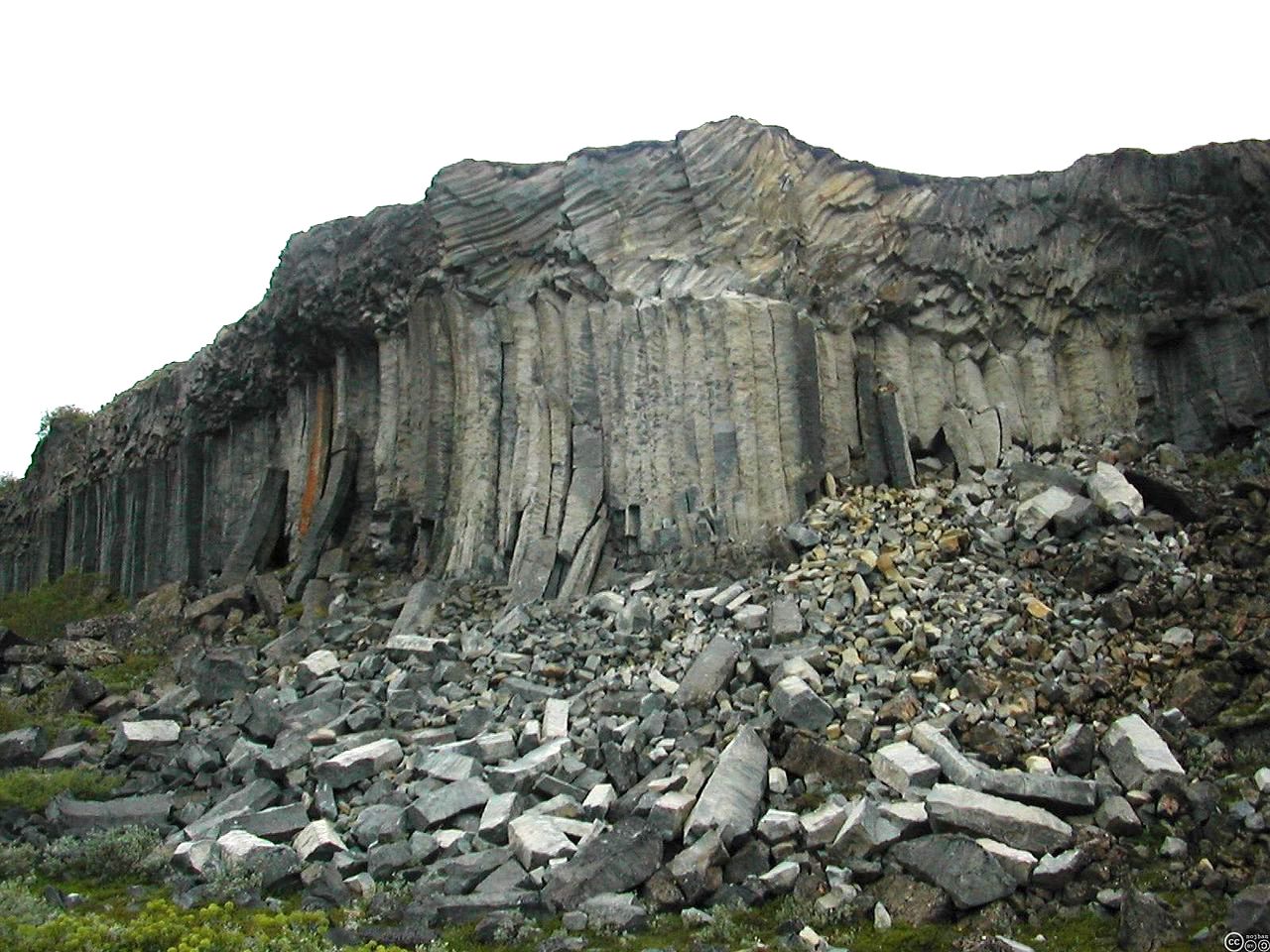
This is a (hint: this type of mass wasting involves a rapid vertical descent) with a (hint: the term for accumulated debris from mass wasting of a steep slope or rock face) of basalt columns at the bottom.
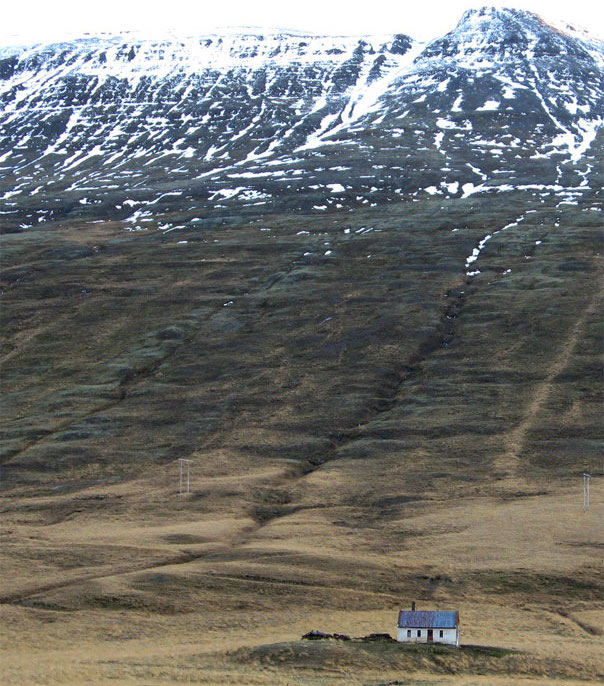
This is an example of .
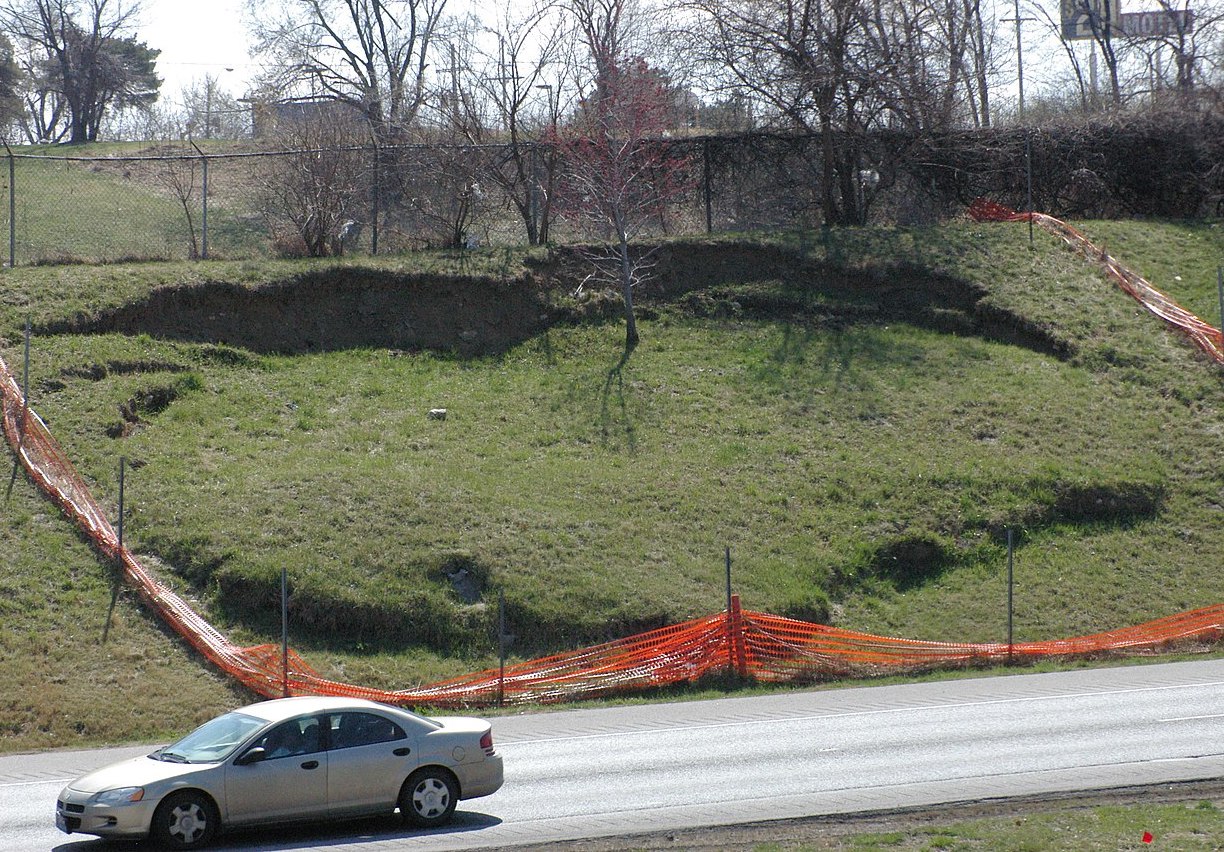
This type of mass wasting is a . A distinctive (hint: A vertical face of exposed sediment, two words) is visible at the top, and the (hint: the advancing part of the sliding mass) bulges out toward the bottom.
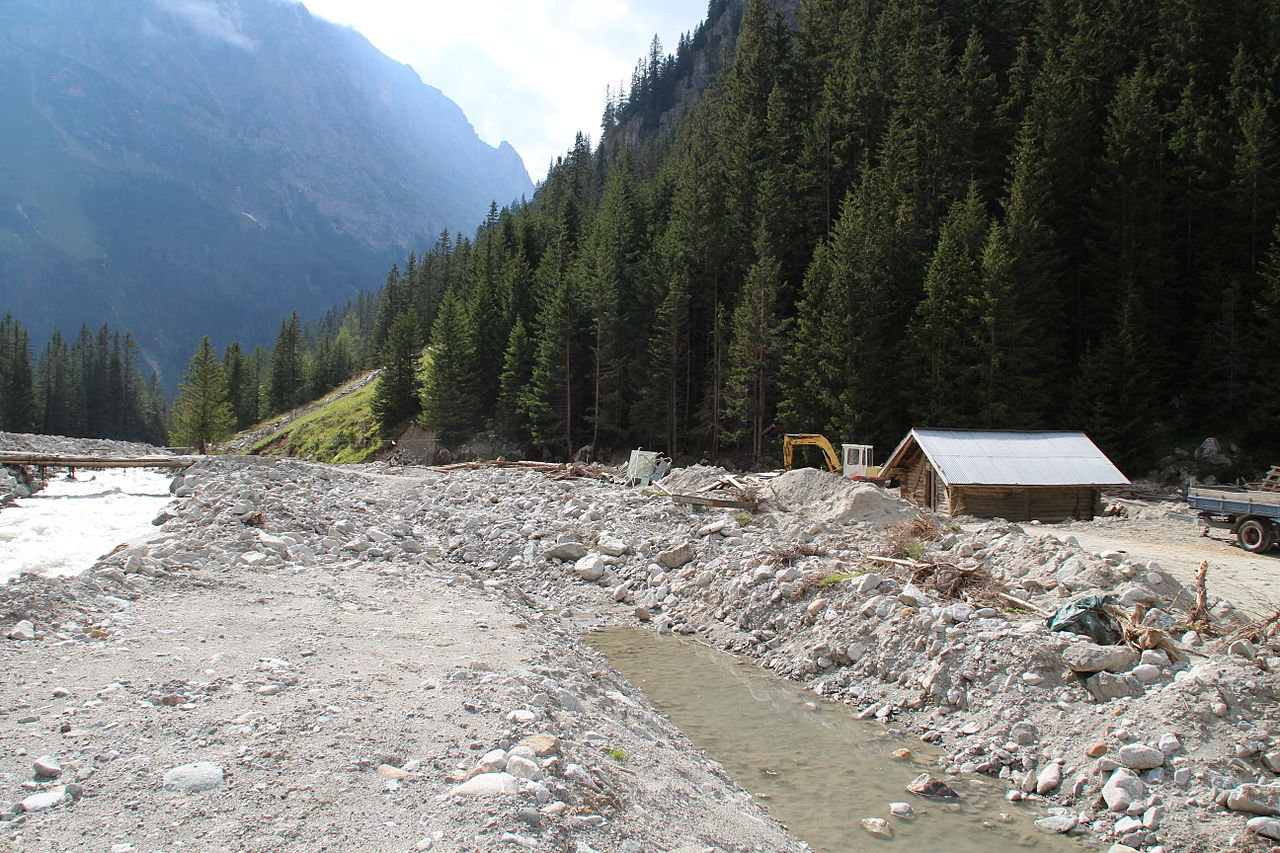
This material is here because of a (hint: mass wasting involving water-bourne particles in a range of sizes, two words).
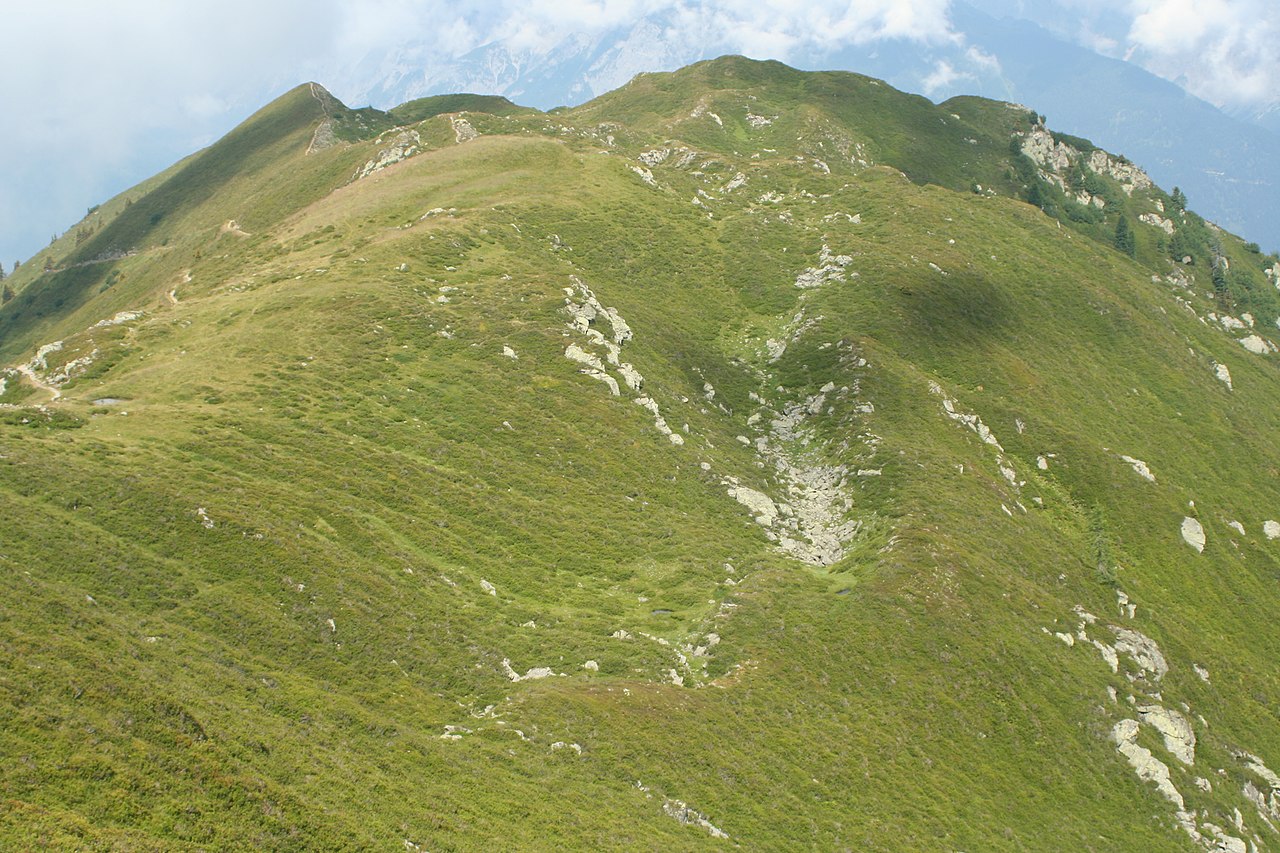
This is a (hint: also called a sackung). A similar slope failure is present along the Revelstoke Reservoir.
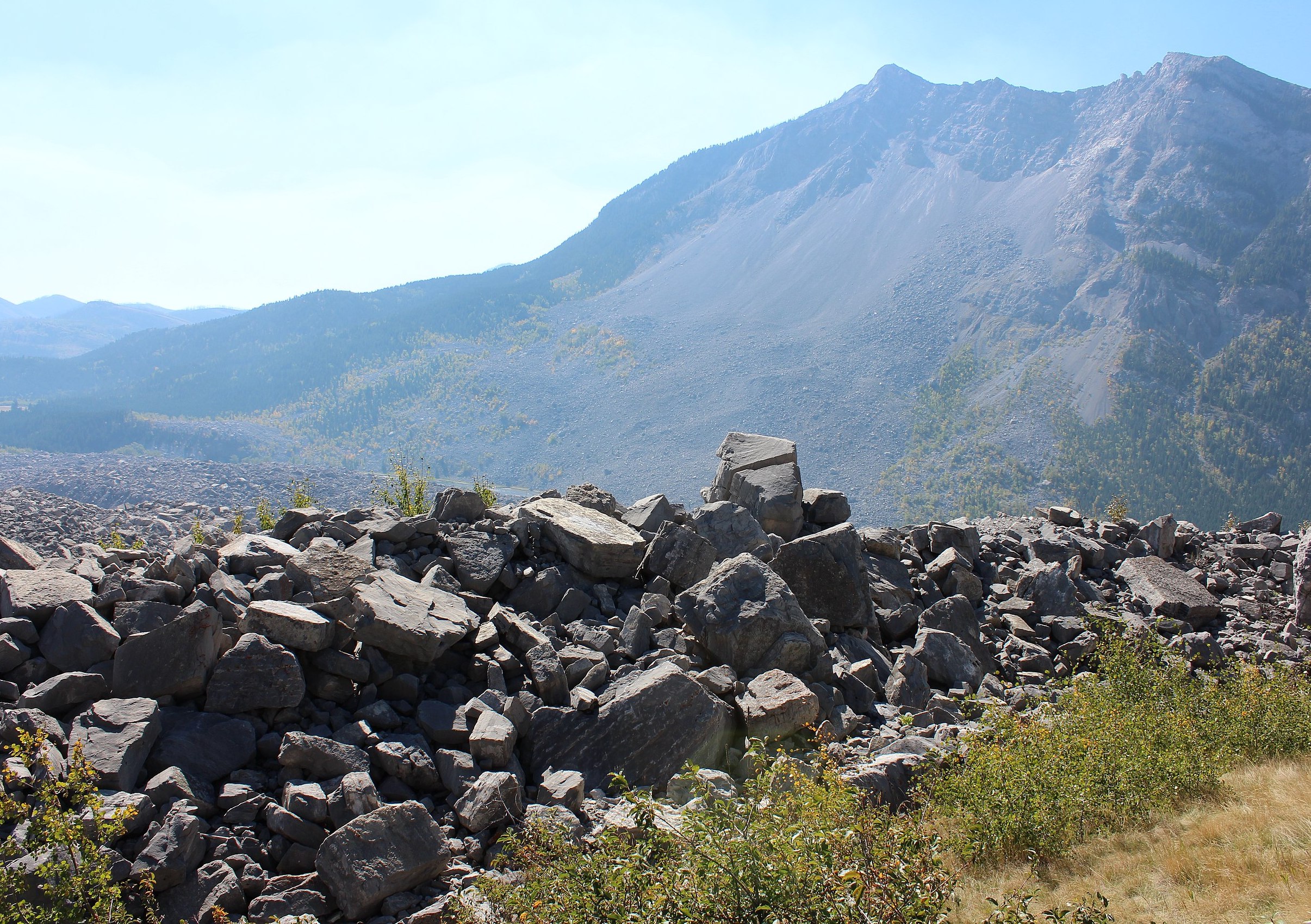
This (hint: you might also have seen snow involved in this type of slope failure) slid far from its origin, behaving like a turbulent fluid. This event originated with failure along bedding planes oriented (hint: parallel or perpendicular) to the slope.
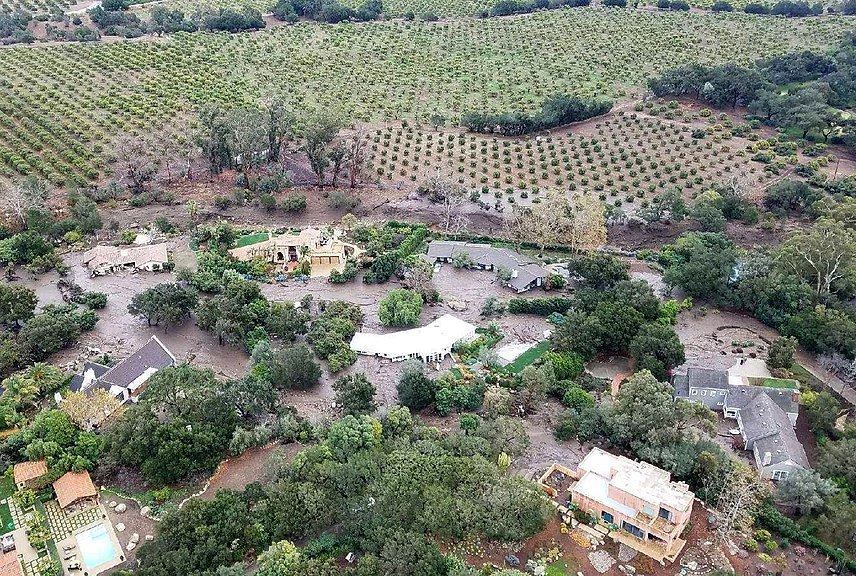
This happened when fine-grained sediments were washed down from hillsides recently deforested by wildfires.
To check your answers, navigate to the below link to view the interactive version of this activity.

